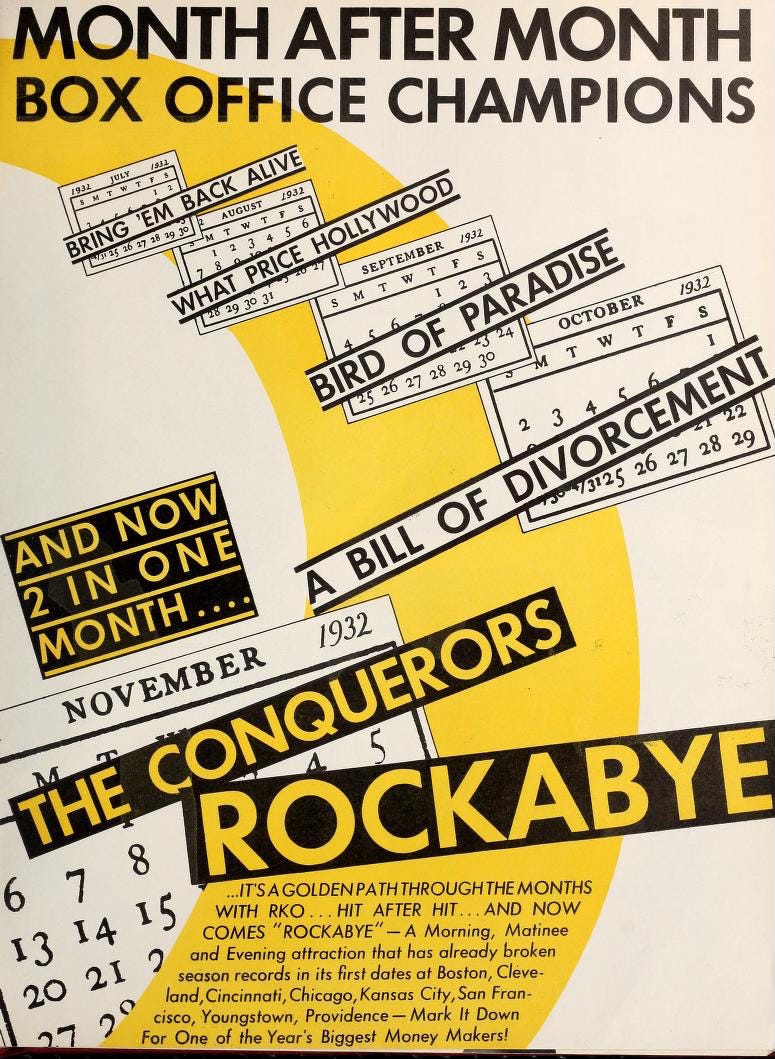I've been saving images of some intriguing ads I’ve come across while flipping through Motion Picture Herald. From the artwork and photography to the copy and design, they’re visually striking and offer a fascinating glimpse into how films were marketed within the industry.
Motion Picture Herald was an industry publication for theater owners and distributors, featuring box office reports, studio promotional materials, and updates on technical innovations. Because studios promoted all their films—major releases and smaller titles alike—it’s an excellent resource for discovering forgotten, lost, or overlooked films. The ads not only showcase movies that have faded from public memory but also highlight actors and actresses who, while not widely remembered today, were once considered major bankable personalities.
Unlike mass-market advertising, the ads in Motion Picture Herald were tailored specifically for theater owners and industry insiders. This insider focus makes the language used to promote films especially interesting—and often quite different from public-facing campaigns. These materials emphasized box office draw, star appeal, and the lucrative potential of extended or held-over theatrical runs. Studios framed films in terms of their profitability, highlighting popular stars as guaranteed audience magnets and touting the ability of certain titles to sustain long theatrical engagements.
The early 1930s were a tumultuous time for U.S. movie theaters. The Great Depression had devastated attendance, forcing many independent exhibitors to close or operate on razor-thin margins. Between 1931 and 1934, even major theater chains struggled, and studios—many of which owned their own theater circuits—were desperate to keep screens filled and revenue flowing. To reassure struggling theater owners, studios marketed their films as surefire box office hits, often guaranteeing strong attendance based on a star’s appeal or a film’s sensational subject matter. Some ads even suggested strategic booking practices, encouraging exhibitors to capitalize on audience demand by scheduling extended runs or double features.
While public-facing ads relied on emotional appeals, dramatic taglines, and visual spectacle to attract moviegoers, the ads in Motion Picture Herald were rooted in the practical business concerns of exhibitors. This focus provides a unique window into how studios marketed both major releases and smaller films, offering insights into what the industry believed would drive ticket sales and which stars were considered bankable at the time.
Sinners in the Sun (1932)
Directed by: Alexander Hall
Starring: Carole Lombard, Chester Morris, Adrienne Ames, Cary Grant
The film was marketed as a glamorous, star-driven melodrama, with ads proclaiming: “Carole Lombard! The envy of women! The desire of men! What clothes! What beauty! What box office!” This promotional push reflected Lombard’s rising status as a leading lady, positioning her as both a fashion icon and a bankable draw. Though still a few years away from her iconic screwball comedies, Sinners in the Sun capitalized on her allure, selling not just a movie but a lifestyle of elegance and drama. The industry appeal was unmistakable, with another tagline urging exhibitors: “Plan for long runs with this one and get every dollar!”—a reflection of Hollywood’s strategy during the Depression to maximize profits by banking on charismatic stars and opulent settings that transported audiences from their daily struggles.
Keep reading with a 7-day free trial
Subscribe to The Screen Spectator to keep reading this post and get 7 days of free access to the full post archives.






